Staying covered up in the sun is vital to protect the skin, and applying the correct amount of sunscreen is an important part of forming good sun-safe habits.
Skin Protection In The Sun:
Applying sunscreen is an essential part of your daily skincare routine to avoid sunburn. It is vital that you pick a product best suited to your skin type to get the best protection from the sun.
For most people, a quick ‘slap’ of sunscreen and they believe that is sufficient for the day. In fact, using sunscreen correctly is more intricate than you think. This can be in part down to confusing claims mixed with common misunderstandings that often lead to compromised sun safety.
Some of the most common questions regarding sunscreens are, how do sunscreens work? What is SPF? How often do you need to apply sunscreen? Can you rely on once-a-day sunscreen? And what about the SPF you find in your make-up?
Read our Reviews to help you decide which Sunscreen to use on the face –
* The 5 Best Sunscreens For The Face *
What Is SPF Sunscreen – What Does SPF Mean?
The Sun Protection Factor (SPF) tells you the level of protection sunscreens give against UVB radiation. This is the radiation that causes sunburn and irreversible damage to skin that may lead to skin cancer.
It also provides an indication (not a guarantee) of how long skin with sunscreen on will take to go red and burn in response to UV exposure when compared with unprotected skin.
Let’s say unprotected skin with no sunscreen would typically burn after 10-15 minutes in the sun. But, if you have sunscreen applied with SPF15, this will allow you to be out in the sun without burning for around 150 minutes. This is because it has a factor of 15 times longer than if you didn’t have sunscreen on.
Remember, this is only a rough estimate, and you have to keep in mind your skin type, the strength of sunlight, and the amount of sunscreen you apply. SPF is a measure of protection from the amount of UVB exposure, and it is not actually meant to help you determine the duration of exposure.
For best protection, it is recommended to use a minimum SPF sunscreen of 30, applying the proper amount which is 2mg to cm2 of skin, or about one ounce for full-body coverage. Most people under-apply sunscreen if you only use ¼ to ½ the amount that is required and make the mistake of not reapplying every 2 hours.
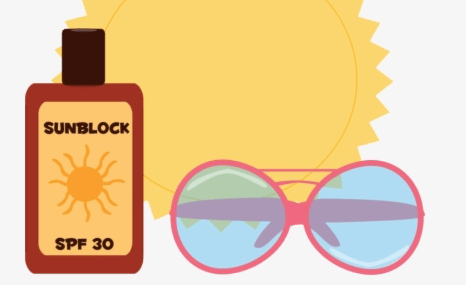
The Sun Protection Factor – SPF scale is not linear.
SPF 15 blocks – 93% of UVB rays
SPF 30 blocks – 97% of UVB rays
SPF 50 blocks – 98% of UVB rays
So, the way to look at this is that SPF30 sunscreen gives you 4% more protection than SPF15 sunscreen.
Another way to explain this is –
SPF15 offers 93% protection, this allows 7 out of 100 photons through.
SPF30 offers 97% protection, this allows 3 out of 100 photons through.
So, even though you are not doubling your level of protection, using an SPF30 will block half the radiation that an SPF 15 would let through to your skin.
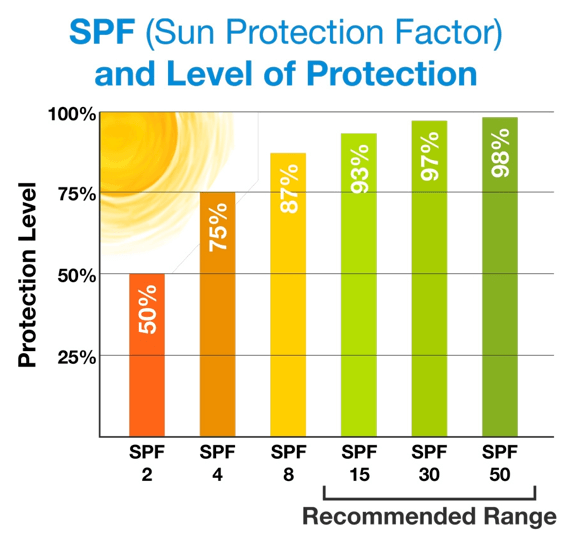
It can sound complicated but do keep in mind, most dermatologists recommend using an SPF30 sunscreen at all times.
Why Not Use A High SPF In The Sun?

Sunscreens with really high Sun Protection Factor, such as SPF75 or SPF100, do not offer significantly higher sun protection when compared with SPF30. This can mislead people into thinking they have more protection than they actually do.
UVA and UVB are both types of ultraviolet radiation from the sun. Both have been linked with skin cancer, although UVB is the leading cause of sunburn, UVA is known to be the cause of premature aging.
Additionally, to have broad-spectrum protection, the UVA protection should be at least 1/3 of the UVB protection. High SPF sunscreens usually offer far greater UVB than UVA protection, thus offering a false sense of ‘total’ protection.
Not all sunscreens protect you from UVA rays. To check if the sunscreen you purchase has UVA protection you should see on the packet a logo with ‘UVA’ written inside a circle.
Don’t Confuse ‘Water-Resistant’ And ‘Waterproof’ Sunscreens:

About 95% of the sunscreens claim to be water-resistant, but this doesn’t mean they are waterproof.
The European industry guideline for water-resistant sunscreens allows the SPF of a product to drop by 50% after a total of 40 minutes submerged in tap water. However, in other parts of the world, the SPF must adhere to what the sunscreen offers after immersion in water.
That means if you buy SPF30 sunscreen, it can drop to SPF15 or less after you have been swimming. If you are spending the day at the beach or by the pool, be mindful of reapplying sunscreen when you leave the water before sunbathing.
Don’t Rely On ‘Once A Day’ Sunscreen In The Sun:
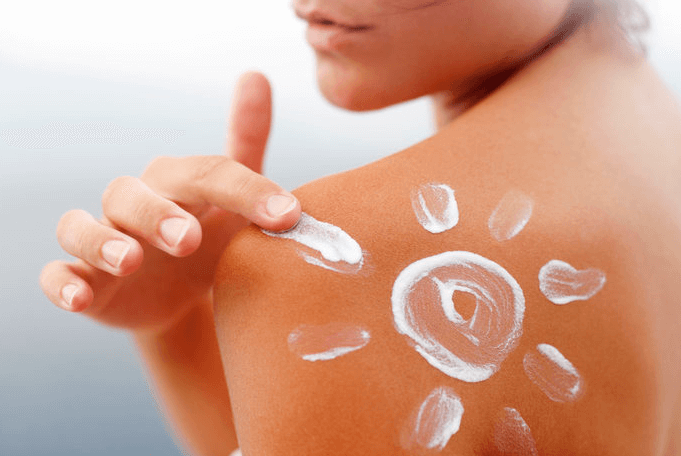
You’ve probably seen ‘Once A Day’ sunscreen on the shelves of your local pharmacy or supermarket. There is no denying that the idea of not having to reapply sunscreen regularly is appealing.
But when tested ‘Once A Day’ sunscreens to see whether they would protect you ‘all day’ in the sun, it was found that very few are up to the job. The average drop in SPF after it was applied for six to eight hours was 74%.
There is no universal standard that sunscreen manufacturers have to adhere to when making a ‘Once A Day’ claim. When asked, sunscreen companies that offer this ‘promise’ say that they do multiple tests to justify it.
The Cosmetics, Toiletries and Perfumery Association (CTPA) who control sunscreen manufacturers have said that companies are moving away from ‘Once A Day’ claims, and now referring to them as ‘Durable Sunscreen.’ Regardless of how long your sunscreen claims to last, stay safe and reapply regularly.
Don’t Buy A Sunscreen That’s Greasy Or Sticky:
Some sunscreens can feel sticky or greasy when you apply them and difficult for the skin to absorb, often leaving you covered in a chalky white residue. Because they are not pleasant to use, a lot of people can’t be bothered to reapply them throughout the day.
An excellent way to ensure you get into the habit of regularly applying sunscreen is to find one that feels good on your skin. Do this by testing ‘samples’ in stores, choosing one that’s easy to use, provides excellent sun protection, offers high UVA protection, and stick with that brand.
We’ve found five face sunscreens that not only protect from UV radiation from the sun, but they’re also pleasant to apply. To find out which sunscreens will keep you protected without leaving your skin feeling sticky or greasy, click here.
Don’t Apply To Little Sunscreen:
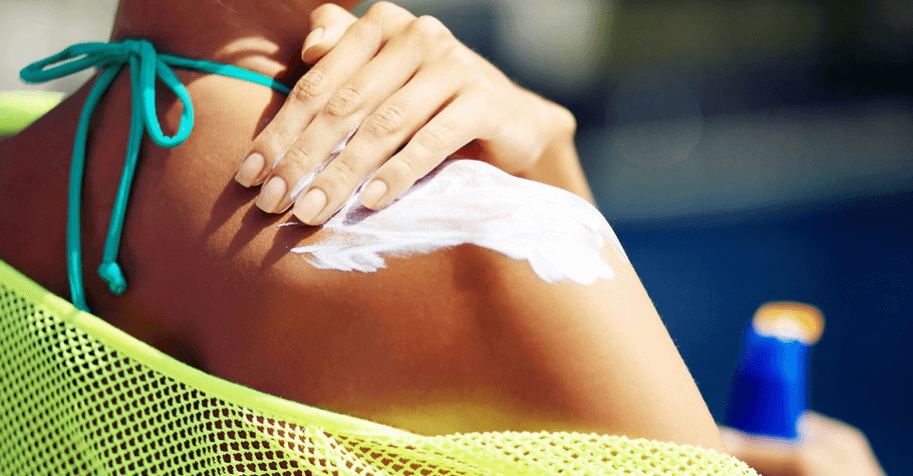
The reality is you are never applying enough sunscreen, most of us use less than half of the amount we should. A sunscreen’s SPF (Sun Protection Factor) is measured using a test that requires a set amount to be applied – 2mg per square centimeter of skin, to be precise.
So, for your sunscreen to offer the protection claimed, you need to apply the correct amount on your body, this means the total sunscreen required for the average-sized adult is 35ml. That is measured out as seven teaspoons of sunscreen. You will use one spoonful for head and neck, one for each arm and leg, one for your back, and one for the torso.
Applying less sunscreen can have a significant impact on the protection you receive. If you use half as much sunscreen, this means you get as little as a third of the claimed SPF. Sunscreen also needs to be reapplied regularly to offer protection to the skin, so slather more on at least every two hours.
How Do ‘Mineral’ Sunscreens Work?
‘Mineral’ or ‘Physical’ sunscreens as they often called use physical blockers, such as titanium dioxide or zinc oxide, to prevent UV rays from reaching the skin. These ‘Physical’ blockers are made using naturally occurring minerals. If you do pick a ‘Mineral’ sunscreen, it’s essential to check that it includes an ingredient that acts as a sun filter.
Read – Mineral Or Chemical Sunscreen – The Facts
Does Make-Up With SPF Shield Me?
See Product On – Paula’s Choice
Some sun protection is better than none at all, but products will only reach the full SPF when the correct amount is applied to the skin. For any product to provide the SPF that is said on the bottle, you need to use 2mg per cm2. This means about one teaspoon of make-up with SPF needs to be applied to your face!
And, just as with sunscreen, it needs to be reapplied regularly. In reality, you are unlikely to use the correct amount of make-up required. For example, in the case of a foundation with SPF, that would mean a 30ml bottle would only last six applications. When used as part of your regular daily make-up, this isn’t going to be enough to protect you from the sun.
How The Sun Sees You:
Do I Need A Specific Sunscreen For Babies In The Sun?
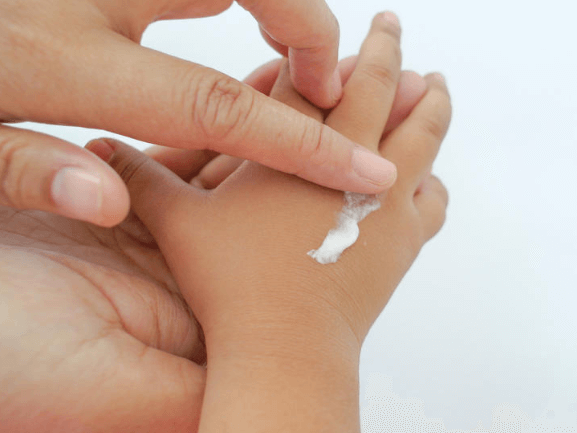
Sunscreens that are specially formulated for babies and children are less likely to irritate young sensitive skin. However, sunscreen is just one step to take to keep kids safe in the sun.
You need to encourage kids to slip on a t-shirt, splash on loads of sunscreen, put on a hat, and wear sunglasses. These are all excellent ways to help children to remain safe while playing in the sun. Babies skin is so delicate they should be kept in the shade at all times.
‘Sensitive’ to skin sunscreens are available; these tend to use physical blockers, which act as a screen to protect the skin. Chemical absorbers soak up UV radiation but are also more likely to cause skin irritation than physical (mineral) blockers.
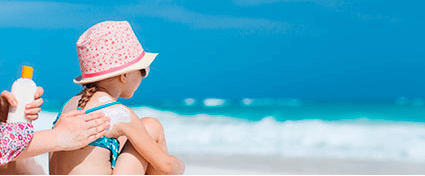
There is a long list of ingredients that are used as chemical absorbers. If you are looking to avoid them, the easiest way is to look for products that are labeled for ‘sensitive’ skin rather than search for specific ingredients.
La Roche Posay Sunscreen for Babies SPF50
Read – Best Sunscreen UVA and UVB Protection
Don’t Use SPF To Spend Hours In The Sun:
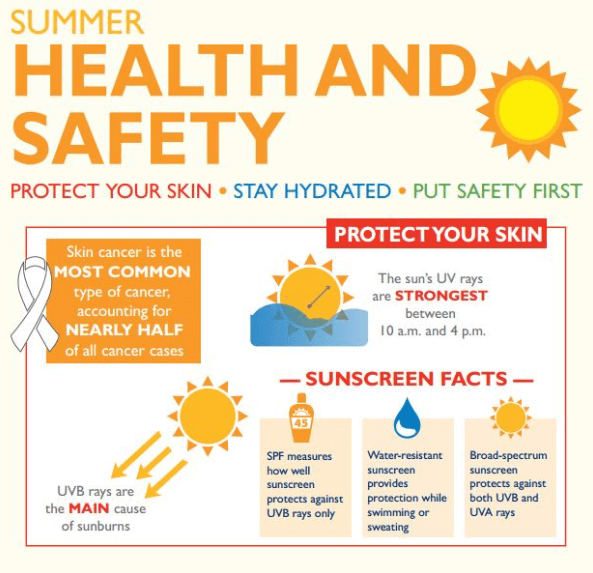
Although this might sound counter-intuitive, surely using sunscreen is supposed to mean we can spend more time in the sun? No, it definitely is not!
Sunscreen is intended to help protect our skin from the sun during your normal daily activities. It should not be used as a reason to spend long periods in the sun or to help with getting a beautiful suntan.
There is no such thing as having a ‘healthy tan.’ Skin Protection In The Sun Is Vital. If you notice a change in color to the skin through sunbathing, it’s a clear indication that your skin has been damaged from overexposure to the sun.
Research has shown that people who use high SPF stay out for longer in the sun. People who apply sunscreen are also more likely to have been sunburnt many more times than those who avoid the sun.
This comes down to the misconception we have about and use sunscreen. It can only offer so much protection, and you shouldn’t rely on sunscreen alone.
Skin Protection In The Sun has to be your number one priority. You should use sunscreen along with sunglasses, a hat, loose clothing, and frequent relaxing breaks in the shade and staying hydrated drinking water and not alcohol!

I hope you have found this post on ‘Skin Protection In The Sun – Make Sure You Know How To Stay Protected’ to be helpful. If you have any questions please leave them below and I will be happy to discuss them with you.


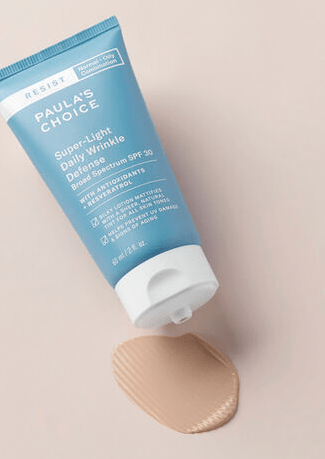
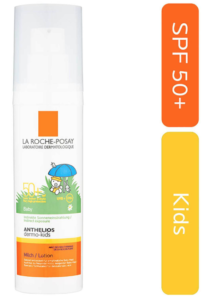
What a very informative read…I am surprised about the the actual amount of protection you are ‘really’ getting from the different factors of sunscreen. I am pleased you mentioned about babies and how vulnerable their delicate skin is in the sun, parents really do need to be extra careful when taking babies/children out for long days in the sun, and just how important it is to keep protected especially with our summers getting hotter!
That is great information you provide. The idea that sunscreen remains on you after being in the water is very dangerous. So many people are unaware of the importance to reapply after swimming. It is the time you see most people on the beach getting burned after coming out of the water and lay under the sun to dry without any protection to their skin. People really need to be made more aware of protection from the sun.
I’ve been using the Shiseido Expert Sun Ageing Protection SP50 throughout the last week in the highest temperatures of the year. I can tell you it’s been well and truly tested and pleased to say gave my fair skin the protection it needed with no sign of redness or burning. Can you tell me which sunscreen you would recommend for the body? As I said, I have pale skin which burns very easily, and I also can suffer with prickily heat! Oh the joy’s of sensitive skin! Thanks.